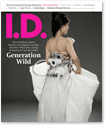10/21/2010
los links básicos
Aqui les dejo links de websites básicas para cosulta.
Chéquenlas!
Essential Objects Links
CULTURE
Essential Culture and Innovation Links
BUSINESS & INOVATION
Essential Business and Innovation Links
MATERIALS
Essential Materials and Ressources Links
TECHNOLOGY
Essential Technology Links
Chéquenlas!
Essential Objects Links
Apartment Therapy
Changing the world, one apartment at a time.
Changing the world, one apartment at a time.
Cardesign News
Leading online resource for automotive design.
Leading online resource for automotive design.
Concept Cars
Concept Cars...nothing more, nothing less.
Concept Cars...nothing more, nothing less.
CoolHunting
Weblog on what's hot in design, culture and technology.
Weblog on what's hot in design, culture and technology.
DesignBoom
Milan-based design site - interviews, competitions, courses.
Milan-based design site - interviews, competitions, courses.
Designerspace
Car design image gallery.
Car design image gallery.
Designspotter
German design plattform.
German design plattform.
Engadget
Definitive weblog on new gadgets.
Definitive weblog on new gadgets.
Freshness
Sneakers, shops and art.
Sneakers, shops and art.
Funfurde
Funky furniture and design.
Funky furniture and design.
Get Crafty
Home of the craftistas.
Home of the craftistas.
Gnr8's News
The latest in contemporary lighting design.
The latest in contemporary lighting design.
Josh Spear
The pulse of cool.
The pulse of cool.
MoCo loco
Modern contemporary design and architecture.
Modern contemporary design and architecture.
Reluct
Design and architecture news.
Design and architecture news.
The Red Ferret Journal
Tantalisingly tasteful, tacky and taut tech trivia.
Tantalisingly tasteful, tacky and taut tech trivia.
Treehugger
The definitive, modern yet green lifestyle filter.
The definitive, modern yet green lifestyle filter.
CULTURE
Essential Culture and Innovation Links
Archinect
Making architecture more connected.
Making architecture more connected.
Boing Boing
A directory of wonderful things.
A directory of wonderful things.
Design Observer
Writings about Design and Culture
Writings about Design and Culture
DesignWS
International design news.
International design news.
Design Online
Chinese industrial design page (provided in english too...)
Chinese industrial design page (provided in english too...)
Dezain.net
Design weblog and photos.
Design weblog and photos.
Digitalthread
Web design links and design resources.
Web design links and design resources.
Eyebeam rebLOG
Distliling art and technology.
Distliling art and technology.
Iconeye
Icon magazine: Architecture and Design
Icon magazine: Architecture and Design
ID Fuel
Hardcore industrial design weblog.
Hardcore industrial design weblog.
ID Grid
Industrial design news and resources.
Industrial design news and resources.
Inhabitat
Devoted to the future of smarter design and a more sustainable future.
Devoted to the future of smarter design and a more sustainable future.
Metafilter
Active community weblog.
Active community weblog.
Notcot
A visual filtration of ideas, aesthetics and amusement.
A visual filtration of ideas, aesthetics and amusement.
One plus one equals three
Weblog about design, interactivity and culture.
Weblog about design, interactivity and culture.
Pigmag
Italian site about culture and art.
Italian site about culture and art.
Sensory Impact
The culture of objects.
The culture of objects.
Things Magazine
New writing about objects and their meanings.
New writing about objects and their meanings.
Unbeige
All things design, design personalities, and design culture.
All things design, design personalities, and design culture.
WFMU’S Beware of the Blog
A weblog regarding the culture of objects.
A weblog regarding the culture of objects.
We make money not art
Weblog about everything.
Weblog about everything.
WorldChanging
Tools, models and ideas for building a better future life all around us.
Tools, models and ideas for building a better future life all around us.
xBlog
The visual thinking weblog.
The visual thinking weblog.
BUSINESS & INOVATION
Essential Business and Innovation Links
37 Signals
A weblog about design, customer experience, entertainment, politics, basecamp, backpack, products, small business and more...
A weblog about design, customer experience, entertainment, politics, basecamp, backpack, products, small business and more...
All this Chittah- Chattah
A weblog about the "fascinating minutiae of life". By Steve Portigal.
A weblog about the "fascinating minutiae of life". By Steve Portigal.
CPH127
Design and Innovation Weblog.
Design and Innovation Weblog.
Customer Experience Crossroads
Susan Abbott searches for branded customer experiences and how to create them.
Susan Abbott searches for branded customer experiences and how to create them.
Customer Experience Strategy
Very good weblog about customer experience strategy.
Very good weblog about customer experience strategy.
Does Size Matter?
The anwer to "Where do we go buy some innovation".
The anwer to "Where do we go buy some innovation".
Design Management
A good weblog about design, management and business related issues.
A good weblog about design, management and business related issues.
Good Experience Blog
A focus on customer experience, by Mark Hurst.
A focus on customer experience, by Mark Hurst.
If.psfk.com
Daily inspiration for brand planners and creative thinkers.
Daily inspiration for brand planners and creative thinkers.
Innovation Blog
Forum for ideas and approaches to generating and supporting innovation in product development.
Forum for ideas and approaches to generating and supporting innovation in product development.
Metacool
Thoughts about art and science by Diego Rodriguez.
Thoughts about art and science by Diego Rodriguez.
Perpective
Niti Bahn's weblog.
Niti Bahn's weblog.
Pod Consulting Group
Glen Martin’s weblog.
Glen Martin’s weblog.
RED: UK Design Council
Challenging accepted thinking on economic and social issues through design innovation.
Challenging accepted thinking on economic and social issues through design innovation.
The Illuminated Innovant
his blog discusses books on the general topics of innovation, creativity, leadership and strategy.
his blog discusses books on the general topics of innovation, creativity, leadership and strategy.
Thinking by Peter Davidson
Ideas and commentary on advertising, branding, marketing, technology and culture.
Ideas and commentary on advertising, branding, marketing, technology and culture.
This is Broken
A project to make businesses more aware of their customer experience, and how to fix it.
A project to make businesses more aware of their customer experience, and how to fix it.
MATERIALS
Essential Materials and Ressources Links
AZoM
Massive listings of materials and their properties.
Massive listings of materials and their properties.
Digikey
Catalog of electronic components.
Catalog of electronic components.
Design inSite
A designer's guide to Manufacturing
A designer's guide to Manufacturing
Eco-Labels
Guide to environmental labels.
Guide to environmental labels.
Engineering Resources
Technical information, products and training.
Technical information, products and training.
Green Map systems
Maps that chart the natural environment.
Maps that chart the natural environment.
IQS Directory
Search Industrial Manufacturing Companies, Suppliers and Distributors
Search Industrial Manufacturing Companies, Suppliers and Distributors
MANA Online
Manufactures Agents.
Manufactures Agents.
MBDC
Products that contribute to environmental prosperity.
Products that contribute to environmental prosperity.
Material Data Source
Searchable database of material data sheets.
Searchable database of material data sheets.
Materialexplorer
Material database and inspiration.
Material database and inspiration.
McMaster-Carr
Search over 420,000 products.
Search over 420,000 products.
MSC Industrial Supply
Direct marketers of industrial supplies.
Direct marketers of industrial supplies.
o2
International sustainable design.
International sustainable design.
Outwater Plastics
Large inventory of plastic parts.
Large inventory of plastic parts.
Plastic News
Newspaper covering the plastics industry.
Newspaper covering the plastics industry.
Plastics Technology
Plastic Materials selection database.
Plastic Materials selection database.
Small Parts
Huge hardware catalog of tiny things.
Huge hardware catalog of tiny things.
Travers
Metalworking tools and industrial supplies.
Metalworking tools and industrial supplies.
Thomas Register
Definitive industrial search site.
Definitive industrial search site.
TECHNOLOGY
Essential Technology Links
Hack A Day
A fresh tech hack each day.
A fresh tech hack each day.
Future Feeder
Feeding technology, design and architecture.
Feeding technology, design and architecture.
Futurismic
Weblog on the future and the effects of science and technology.
Weblog on the future and the effects of science and technology.
FutureWire
Futurism and emerging technology.
Futurism and emerging technology.
IFTF’S Future Now
Emerging technologies.
Emerging technologies.
John Maedas Simplicity
Weblog by MIT Media Lab's John Maeda.
Weblog by MIT Media Lab's John Maeda.
Learning Edition and Open Source software list
Maintained by Core77 blogger csven.
Maintained by Core77 blogger csven.
MakeZine
Tech-based hacks.
Tech-based hacks.
Wired News Blog
Weblog on technology, culture, business and politics.
Weblog on technology, culture, business and politics.
Z+Blog
Future and culture weblog by Andrew Zolli.
Future and culture weblog by Andrew Zolli.
vía Core77
Portafolio mata carita
Why You Should Start Your Portfolio Now
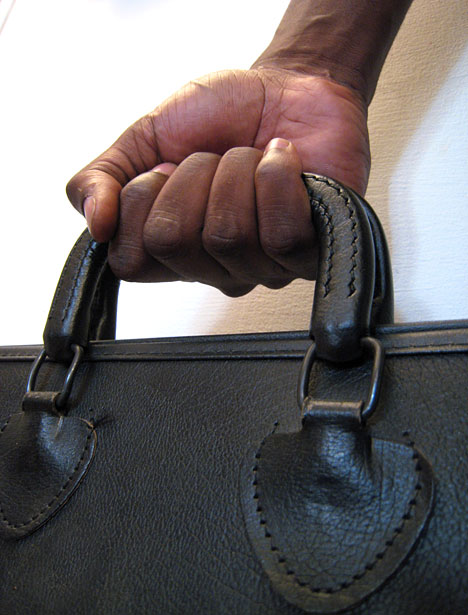 Most design students start putting their portfolios together at the end of their education—indeed, most schools offer their "portfolio class" during the final semester. Bad idea. What you should do instead is start your portfolio the first semester of your design education. Here're 2 whys and 2 hows:
Most design students start putting their portfolios together at the end of their education—indeed, most schools offer their "portfolio class" during the final semester. Bad idea. What you should do instead is start your portfolio the first semester of your design education. Here're 2 whys and 2 hows:Why #1:
Everything you will eventually want to put in your portfolio will be a)lost b)stolen c)broken d)all three. Bottom line: when you're ready to "put together your portfolio," you will invariably have nothing to put in it—it'll all be gone. So it's a good idea to capture your work as you do it, and put it into a format that can easily be tweaked later.Why #2:
Internships. Design studios considering interns will be much more impressed with someone who has a book of work to show than someone who "learns fast and is a hard worker."How #1:
Take pictures of every single thing you produce—no matter how lame or how useless you think it is. Digital pictures are essentially free, so it's really your time we're talking about. And you don't have a leg to stand on arguing that the 9 hours you spent on your prototype doesn't merit the 1/60th second to document it. Then, right before the final crit of a project, take photos of the finished design (see light tent). That way, you'll capture it before it gets busted or fingerprinted to death. Put all these photos into a clearly labeled folder on your computer (or flickr, or blogger, or whatever). Label them really well, 'cause you may need to navigate them in 3 years from now.How #2:
Hire the best graphic designer you can afford first semester and get them to create a simple, clear, master template that you can simply "populate" with your work. Categories can be project title, description paragraph, glamour shot, process photos, diagrams, etc. When each project is finished, insert all the assets you've been gathering into the template, and then move on. Don't design it (it's already designed—that's what you hired out), just populate it. Your book will now be an evolving document that will give you great comfort and hopefully create some great opportunities.(By the way, we know that nothing we can possibly say here will actually make you follow this advice. But ask any recent grad what they'd do differently and listen to them respond, "I wish I documented my work while I was doing it." Promise.)
vía hack2school
Participa!
5 Reasons to Enter Design Competitions While You're a Student
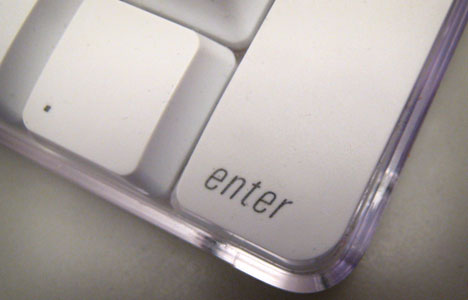 There's nothing duller than looking at a student portfolio with nothing in it other than "student work." So how do you change it up? Well, enter a bunch of design competitions while you're in school, and you'll have a more varied mix. But that's not all. Here are 5 reasons why you should be entering design competitions while you're still a student:
There's nothing duller than looking at a student portfolio with nothing in it other than "student work." So how do you change it up? Well, enter a bunch of design competitions while you're in school, and you'll have a more varied mix. But that's not all. Here are 5 reasons why you should be entering design competitions while you're still a student:1.
Preparing your entry will force you to create a well-crafted, well-produced "piece"—with great photography and great copy. Which means it's portfolio-ready.2.
Even if you don't win, many competitions—especially online ones—publish dozens of notable entries. So you'll probably get some press from it, which you can screengrab and put in your portfolio next to the entry spreads.3.
It's not schoolwork. Many design competitions have themes that are ambitious, progressive, and challenging, so entering them will give you a great opportunity to spread your creative wings. Especially if you find that a lot of your classwork doesn't possess these characteristics, go get it across the street.4.
The fact that you enter design competitions sends the message that you're engaged in the design world beyond school. Which you should be.5.
You may just win. And then that point about printing out press clippings takes things to a whole new level. "I see that you've won or been published in 3 magazines and on 5 websites since your Junior year?" Endorsements from judges and editors may get your interviewer to think a little more seriously about you, which is the point, right?vía hack 2 school
Buena idea intententenlo
Build Your Desk Out of Cardboard for Free
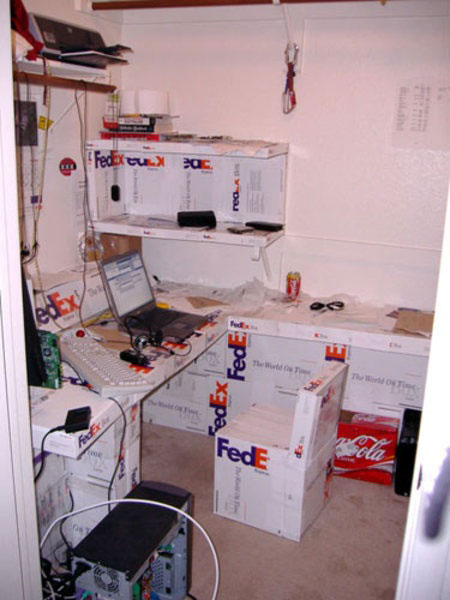 Everyone's favorite DIY project, FedExFurniture.com, is offline right now, but you can still see some pics here. These kind of things can be surprisingly sturdy, and if you do most of your heavy construction in the studio—more fun and inspiring than working alone in your room—you won't need much structure anyway. Just a place to put your electric sandwich press on. Loser.
Everyone's favorite DIY project, FedExFurniture.com, is offline right now, but you can still see some pics here. These kind of things can be surprisingly sturdy, and if you do most of your heavy construction in the studio—more fun and inspiring than working alone in your room—you won't need much structure anyway. Just a place to put your electric sandwich press on. Loser.(If you can't improvise and want something fancier, you can try foldschool.)
vía core 77
10/17/2010
Etiqueta para Vino
En esta ocasión los alumnos de 7mo semestre en la materia de Mercadotecnia del producto con el profesor LIN. Manuel Valencia desarrollaron una propuesta para incrementar el consumo del vino, cada equipo eligió el segmento de mercado que creyó prudente, aquí les dejo las propuestas qué opinan? saludos!

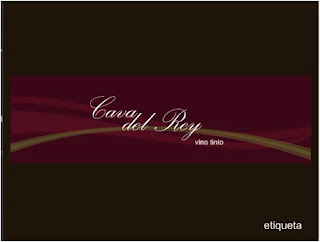

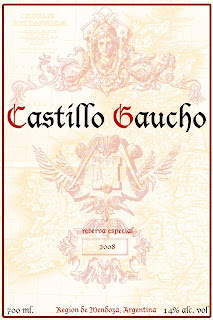
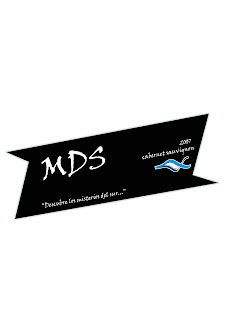
10/12/2010
A Brief Guide To Design Education by Adam Richardson
Disappearing License Plate Trick
What is ID and Why Should I Care? by N. Rain Noe

If I could design anything, the world would be a very different place.
I'd make paper towel dispenser handcranks a little lower, so that water didn't trickle down my arm when I crank out the paper. I'd specify a heat-retaining ceramic for my toilet seat, and I'd embed a refrigerant unit in my pillow so I wouldn't have to flip it over to find the cool spot. I'd design condoms with a little bump on one side of the ring so I can distinguish sides in the dark. I'd design an alarm clock with a moving snooze button that's an easy target the first time, and becomes harder to find with each attempt. I'd design rings with round edges so they don't dig into bars of Irish Spring and get clogged with soap slivers each time I wash my hands.
We here at CORE77 represent Industrial Designers. Our job is to design products--anything and everything mass-produced, from Ferraris to toasters, and furniture to television sets. Industrial Designers dream up products through drawings, sketches, renderings, even doodles, and present these dreams to the manufacturing client, as a vision of what their products should look like.
The inside of an industrial designer's sketchbook often resembles a sort of flattened, compressed mad scientist's laboratory, filled with doodles of present-day products and futuristic objects--two-dimensional daydreams yearning to be transformed into three-dimensional reality. Industrial designers also create ideas with their hands, using studio materials like clay and modeling foam to show what a product should feel like.
While legend has Michelangelo discovering his sculptures inside blocks of marble, industrial designers often find the shape of the latest electronic gadget inside a chunk of clay or foam, or increasingly in a digital equivalent: Alias, SolidWorks, Rhino, Inventor or another of the myriad CAD programs that have come to dominate not just the design and engineering of products, but animation and film-making too. Whatever the material, designers can spend hours or days molding, forming, texturing, evaluating and adjusting their concept model, re-shaping the lines that eventually define a manufactured product, to be handled and utilized by thousands or millions of consumers. When you pop a brand-new product out of the box and touch it, the designer's hands and eyes have already run over that surface, in one way or another, hundreds of times.

For all the different goals designers offer for what they do at work, they can mostly be summed up with these two:
1) to make the product attractive
2) to make the product not be a pain in the neck.
I say the latter because if you think about it, nobody wants a toaster, or a lamp, or an iron. What people want is toast, light, and pressed shirts. You want certain things to happen in your life, like clean hair, good music, and to keep in touch with your friends, and so you have to put up with shampoo bottles, a stereo, and a phone, all of which are designed. These products can be a bunch of stodgy crap that clutters up your apartment, or a hyper-cool collection of objects that subtly enhance your life. The difference is in the way they're designed; the way they look and feel.

Some products look and feel...well...cool, and work well; the designer spent time with the product, refining the lines, testing the functionality. Other products have annoying qualities that can outweigh their usefulness, like coffee tables with corners that draw blood and remote controls that look like maps of Manhattan. The reason that companies keep making these poorly designed products is because people keep buying them. Consumers' inattention to design leads them to continue purchasing crappy stuff because they're not aware of the alternative. They don't realize how ugly the product's going to look in the context of their home and that they'll have a lousy time using it. If you ever couldn't set your alarm clock because you couldn't figure out the Star Trek button display; if you've ever had your finger bitten by a garbage can with a "bear-trap" spring-loaded lid; if you've ever cradled a phone between your face and shoulder and accidentally pressed several buttons with your cheek--then you have an inkling of what we're talking about.
As long as people keep purchasing products like that, with no eye toward how they look and work, the world will remain filled with ugliness, and the failure of things--staplers that require bomb-defusing concentration to reload, lamps that burn your hand when you shut them off, and ambivalent condoms.
vía http://www.core77.com
Video ¨The Simpson¨
Banksy un artista británico que se ha dedicado al graffiti en sus obras urbanas toca temas de política, cultura pop, moralidad, etc. Y en esta ocasión ha realizado una animación que tiene lugar en la famosa serie "The Simpsons" toca temas como explotación, consumismo, maltrato animal, capitalismo, globalización, marginación, condiciones insalubres de trabajo, contaminación, al ver este video vinieron muchas preguntas a mi mente, como diseñadores, ¿Qué estamos haciendo para cambiar esto?, ¿Somos responsables de alguna forma? sea o no diseñador ¿Cómo puedo ayudar?
La indiferencia a este tipo de situaciones nos hace tan responsables como a las personas que hacen dinero de esta forma entonces, ¿estamos dispuestos a actuar? Si no saben de que estoy halando aquí les dejo el video...
Coronación Reina Tec
10/11/2010
Investigación de diseño: Educa tu mente!
Design Research: Practice noticing stuff and telling stories
By Steve Portigal
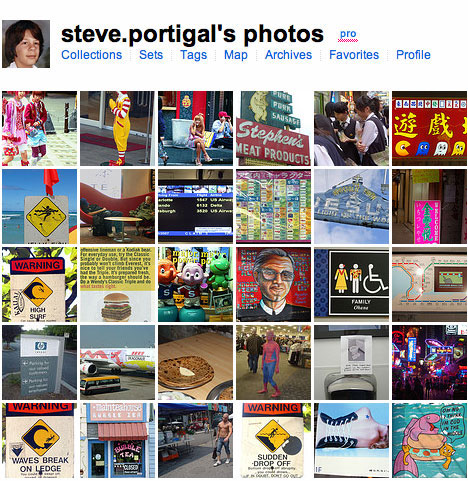 To be a better design researcher, hone your ability to observe the world around you. Keep a regular log that you add to at least weekly (daily would be ideal). Document the strange, the curious, the weird, the awesome and the funny. Learn to keep a close eye on the artifacts, signs, designs, behaviors, products and experiences that you encounter in your everyday life.
To be a better design researcher, hone your ability to observe the world around you. Keep a regular log that you add to at least weekly (daily would be ideal). Document the strange, the curious, the weird, the awesome and the funny. Learn to keep a close eye on the artifacts, signs, designs, behaviors, products and experiences that you encounter in your everyday life.Put your observations on the Internet. Maybe no one will see them, but the discipline of taking your observations out of your own head and publishing them in a sharable form will force you into telling a story. As much as design research is about observing others, there's something very personal about how and what we see, and developing that voice will serve you well. Collect stories and retell them in your own way, emphasizing the perspective you want others to take away.
As much as design research is about observing others, there's something very personal about how and what we see, and developing that voice will serve you well. Collect stories and retell them in your own way, emphasizing the perspective you want others to take away.Your log doesn't need to be conclusive, you just need to be observant and tell people what you think, wonder, or imagine. Learn to hear yourself feeling "Hmm—that's interesting!" and then share the interesting thing, being sure to articulate what it is about it that's interesting. Don't worry about fixing it (if it needs fixing), just notice and tell a quick story in your own voice. Be funny, sarcastic, critical, or outraged as appropriate.
Set up a free account with a photo sharing site like flickr.com, or a blogging site like blogger.com (this stuff probably doesn't go into your MySpace or Facebook account). If you're visual and like to take pictures, then start with flickr for sure. Be sure to include a description of what you've taken a picture of and why you think it's interesting. If you like to write, start with blogger, telling your stories in prose (but throw in a picture once in a while). Aim for 200 words in each post.
Remember that these are sketches. To get better at this, see them as disposable rather than precious, and commit to posting something regularly. Ultimately, this should be fun, not a chore, and just think of the material you'll be able to mine when the need arises.
For examples check out www.janchipchase.com and www.flickr.com/photos/steveportigal.
Steve Portigal is the founder of Portigal Consulting, a leading consultancy that advises market-leading brands on all their customer-facing strategies. He has taught design research to students at CCA and at many conferences.
vía http://www.core77.com/hack2school
Tips para tomar fotos de tu producto
Make Your Product Shots Look Awesome Tip #1: Build a Light Tent
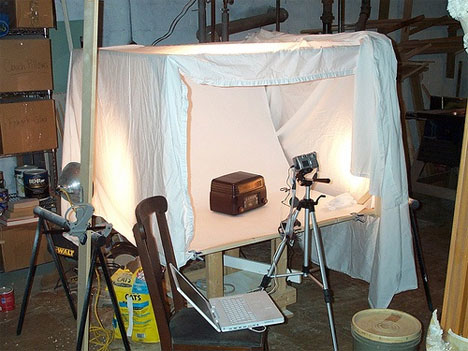
Ever wonder how those product photography shots in the magazines end up so luminous and gorgeous? Two words: Light Tent. Put your models in one of those, place some lights on the outside, and click your way to moneyshot heaven. You could buy one for sure, but it's better to make your own. Make a bigger one and share it with your studiomates!
Make Your Product Shots Look Awesome Tip #2: The 3 Essential Photoshop Tricks
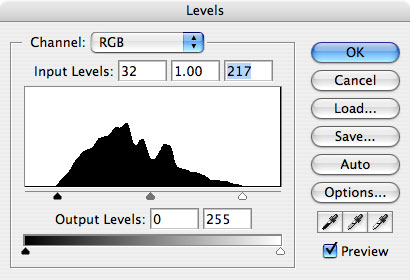 Threre are more Photoshop tutorials out there than you can throw a lasso at, but for our money, there are three Photoshop tricks that will turn your dull, generic digital photo from drab to fab (and the first one's not even a trick.)
Threre are more Photoshop tutorials out there than you can throw a lasso at, but for our money, there are three Photoshop tricks that will turn your dull, generic digital photo from drab to fab (and the first one's not even a trick.)STEP 1: CROP TIGHTER
There is nothing more boring than a picture of a design in the middle of a gray background. Don't do that. Instead, consider a tighter crop of the object, maybe bleeding it off the edge of the frame.STEP 2: USE THE SHADOW/HIGHLIGHT FILTER
Many people go up to the "Image" menu in Photoshop and try to optimize using the "Brightness/Contrast" and "Hue/Saturation" tools. But for our money, the most startlingly useful—and underused—filter is the "Shadow/Highlight" filter. Set it at 25 and hit OK. Then do it again and see if it's even better. If not, back it off with undo. Easy.STEP 3: TRIM THE ENDS IN LEVELS
There is an encyclopedia to be written about how to master Levels, but a quick way to get big results is to simply "trim the ends" on the histogram. If you've got flat lines on the left and right, move the two outer arrows in toward the center. The darks will get richer, the lights will get brighter, and it will take you about 2 seconds. Play with the middle arrow if you like, but really, you could save-for-web right about now.vía http://www.core77.com/
Retratos de 12 años
Jonatan Keller ha creado composiciones con su rostro año tras año en un trabajo que lleva por título “The adaption To My Generation (a daily photo Project)”
Jonathan Keller tiene literalmente: un Facebook. Este artista nacido en Nueva York lleva 12 años consecutivos fotografiándose la cara y colocando sus fotos en Internet. De hecho, solo se detuvo dos semanas (en las que viajó a la Antártida). En su web están colgadas sus creaciones desde 1998. Este loco trabajo que lleva por título “The Adaption to My Generation (a daily photo project)”.
Keller inició esta aventura gastando gran parte de su dinero en una cámara digital bastante cara y avanzada para aquel año, algo que no le agradó a su pareja. “Ni que la fueras a usar todos los días”, le dijo sarcástica. Esto le habría parecido todo un desafío a Jonathan, quien desde ese instante, no ha hecho otra cosa que fotografiarse la cara con esa cámara a diario.
Casi 4 mil fotos después, Keller y su “proyecto fotográfico diario” es un éxito en la web. Hasta existe un video que resume su colección con más de un centenar de rostros (hasta el 2006) colgado en YouTube. El clip ha logrado más de un millón y medio de visitas.
Hoy, a sus 34 años, afirma que conserva su vieja cámara, aunque no sigue con la novia que le inspiró en su reto. Hoy está casado con la artista y diseñadora Keetra Dean Dixon y ha prometido seguir retratando su cara por el resto de su vida, según informa el Daily Mail.
Vía http://elcomercio.pe
Keller inició esta aventura gastando gran parte de su dinero en una cámara digital bastante cara y avanzada para aquel año, algo que no le agradó a su pareja. “Ni que la fueras a usar todos los días”, le dijo sarcástica. Esto le habría parecido todo un desafío a Jonathan, quien desde ese instante, no ha hecho otra cosa que fotografiarse la cara con esa cámara a diario.
Casi 4 mil fotos después, Keller y su “proyecto fotográfico diario” es un éxito en la web. Hasta existe un video que resume su colección con más de un centenar de rostros (hasta el 2006) colgado en YouTube. El clip ha logrado más de un millón y medio de visitas.
Hoy, a sus 34 años, afirma que conserva su vieja cámara, aunque no sigue con la novia que le inspiró en su reto. Hoy está casado con la artista y diseñadora Keetra Dean Dixon y ha prometido seguir retratando su cara por el resto de su vida, según informa el Daily Mail.
Vía http://elcomercio.pe
10/07/2010
10/01/2010
Suscribirse a:
Entradas (Atom)

